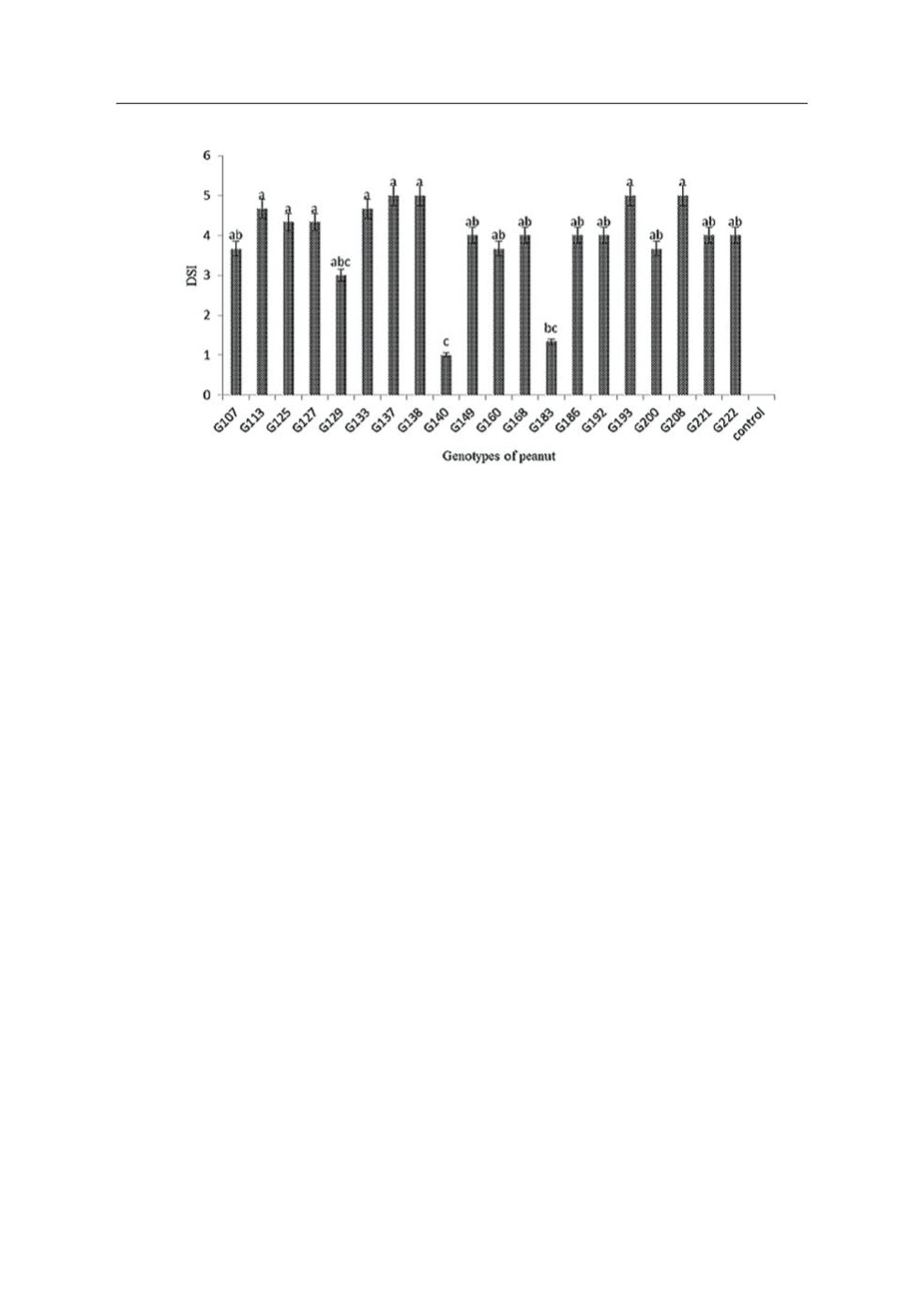
© Benaki Phytopathological Institute
Eslami
et al.
8
and the highest amount of height or shoot
wet weight. No systemic infection symp-
toms such as yellowing or wilting were ob-
served in these two genotypes.
Discussion
Based on our research results, the shoot wet
weight and plant height decreased in differ-
ent treatments related to the isolates viru-
lence. Also, the isolates which were more
virulent decreased the peanut seedlings
emergence rate more. These results on iso-
lates virulence evaluation were compatible
with those achieved by Yaqub and Shahzad
(2005) who evaluated the
S. rolfsii
isolates
virulence on different host plants. Based
on their study results, soil infestation with
S. rolfsii
caused a significant reduction in
germination of sunflower, mungbean and
sugar beet seeds as compared to control.
Germination of tomato, sweet pumpkin,
cabbage and cauliflower seeds were slight-
ly reduced. The highest reduction in plant
length, weight and shoot weight as com-
pared to control was observed in sunflower
and mungbean followed by sugar beet, to-
mato, sweet pumpkin and cabbage. Cauli-
flower plants showed no effect of
S. rolfsii
in-
fection on plant growth.
S. rolfsii
proved to
be highly pathogenic on sunflower, mung-
bean and sugar beet, mildly pathogenic on
tomato, lentil, sweet pumpkin and cabbage,
and non-pathogenic on cauliflower plants
in pot experiments in their study.
Our results related to isolates virulence
and genotypes resistance differences are
comparable with those in the study by
Flores-Moctezuma
et al
. (2006), in which two
onion isolates of
S. rolfsii
from the states of
Morelos and Guanajuato, Mexico were inoc-
ulated to 51 plant species and disease sever-
ity levels were determined. Subsequently,
12 out of 51 plant species were selected for
the determination of pathogenic reaction to
20 isolates of
S. rolfsii
from different regions
of Mexico. Onion isolates from Morelos and
Guanajuato produced variable levels of dis-
ease severity for half of the plants tested.
Five plant species were susceptible or high-
ly susceptible to all isolates. The remaining
plants tested showed differential reactions
to individual isolates, ranging from highly
resistant to highly susceptible.
As already mentioned, the five identi-
fied groups in the tested isolates based on
the virulence, overlapped to some extent
Figure 4
. Disease severity index (DSI) for different peanut genotypes when inoculated with one of the most virulent isolates of
Sclerotium rolfsii.


